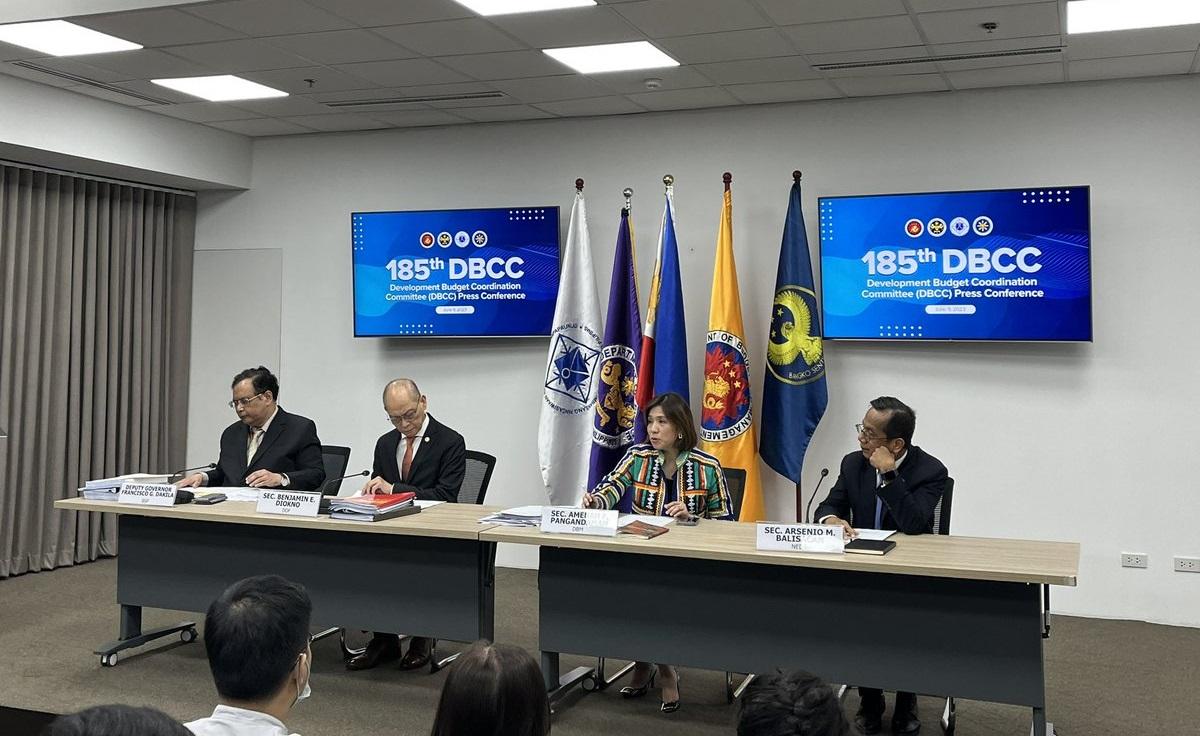Economic managers tout Maharlika Fund as alternative financing option

The Marcos administration’s economic managers on Tuesday reaffirmed their support for the Maharlika Investment Fund (MIF), saying it could serve as an alternative financing option for the government should the Philippines become an upper-middle income state—which would render it ineligible for cheaper borrowing from its development partners.
The chiefs of the Finance and Budget Departments, the National Economic and Development Authority, and the Bangko Sentral ng Pilipinas issued a joint statement touting the creation of the MIF—the Philippines’ very first sovereign wealth fund—“as a vehicle for economic growth.”
The joint statement was issued weeks after the measure creating the fund was approved by Congress after the House of Representatives adopted the MIF bill’s Senate version during the bicameral conference committee meeting.
The economic managers said it “can serve as an alternative funding source to relieve the country from relatively higher interest rates imposed by alternative sources of financing” as “the achievement of upper-middle income status—a goal under the Medium-Term Fiscal Framework (MTFF)—will render the country ineligible to avail of the low-interest loans and grants that are offered to low-income and lower-middle-income economies.”
NEDA Secretary Arsenio Balisacan earlier said the goal of becoming an upper-middle income economy might be achieved in 2025, a year later than previously expected, as the effect of the pandemic-induced recession is likely to temper growth.
Under the World Bank’s updated standards, an upper middle-income economy has a gross national income (GNI) per capita of between $4,046 and $12,535.
In 2019, the Philippines was categorized as a lower-middle income country with a GNI per capita of between $1,006 and $3,955.
“As an additional vehicle for financing, the MIF is expected to widen the fiscal space in the near- to medium -term as it reduces heavy reliance on local funds and development assistance as the main financing mechanisms for infrastructure projects,” the economic managers said.
“By providing an alternative source to public infrastructure spending, there would be a bigger budgetary allowance for other priority expenditures,” they said.
The economic team added that the Maharlika Invest Corporation (MIC)—a government-owned company that will manage the sovereign wealth fund—may invest in capital markets or sectoral investments “as a matter of investment strategy and policy that the lawmakers wisely afforded to the MIF Board.”
Other economists have expressed their concerns about the proposed fund, saying that its objective remains unclear, and that there appears to be some confusion about the source of the funds to be used.
Finance Secretary Benjamin Diokno, who believes the fund can be fully operational before the year ends, has said that while the Congress-approved version of the Maharlika bill prohibits government-run pension funds and health insurance from investing in the MIF, the Government Service Insurance System (GSIS) and Social Security System (SSS) would still be able to “subscribe” to the MIC’s activities on a project level if they deem it advantageous to do so.
Senate Minority Leader Aquilino Pimentel III, meanwhile, called for the bill to be recalled to address "glaring errors and discrepancies" in the "hastily approved" measure.
'Invest funds...and utilize them for investment purposes'
The economic managers also said that the MIF will allow government financing institutions to have an expected rate of return of around 8.6% on average, much higher than their cost of capital and the return in their current investment places.
Among the major points presented by the economic managers in support the MIF are:
- MIF is aligned with the MTFF and the Eight-Point Socio-economic Agenda and operationalizes the Philippine Development Plan 2023– 2028, particularly to “diversify and explore alternative sources of financing....New instrument formats will also be explored to reach new markets and investors.”
- The legal framework provided by Senate Bill No. 2020—approved by the Senate and adopted by the House of Representatives—follows fundamental principles of economic policy and financial market participation in favor of and for the ultimate benefit of the Philippine economy and the Filipino people.
- The Maharlika Investment Corporation (MIC) and the MIF aim to execute and sustain high-impact infrastructure and development projects, ease fiscal constraints, and maximize expected returns for our country’s investments. The objectives are clear: to invest funds that are available in government instrumentalities and utilize them for investment purposes on the basis of their individual mandates.
- The MIF Bill was identified as a priority legislative measure of the Administration and its Economic Team, along with the Military and Uniformed Personnel (MUP) Bill, among other legislative priorities, recognizing that the said measures provide radical reforms to improve our country’s economic and fiscal standing.
- The Senate Bill 2020 imposes enough safeguards to minimize risks for shareholders and fund contributors, including the public sector.
- The Senate has also added another safeguard by introducing the amendment of absolutely prohibiting pension and social funds from contributing to the MIC and MIF.
- The MIF is not only beneficial but necessary at this point in time. While the Philippines can offer investment opportunities, given that we are still a growing economy, we see that the cost of debt has risen, making the need to explore vehicles to attract equity financing such as MIC/MIF urgent.
“Let it be clear that the Administration remains focused and committed to the vital and urgent national agenda, with the MIF being one of the strategies towards this overarching goal of national development,” the economic managers said.
“Let us proceed and continue to pursue our economic transformation as set out in our Medium-Term Fiscal Framework, Eight-Point Socioeconomic Agenda, and Philippine Development Plan 2023-2028, so that we may sooner achieve upper-middle-income status, single-digit poverty levels, and all the other goals in our Agenda for Prosperity,” they added. — BM, GMA Integrated News




